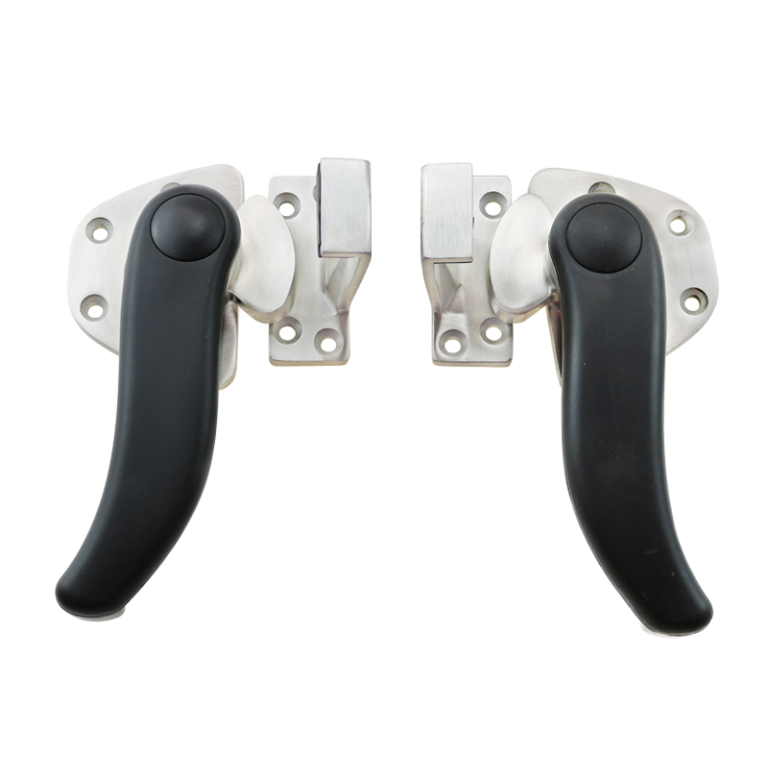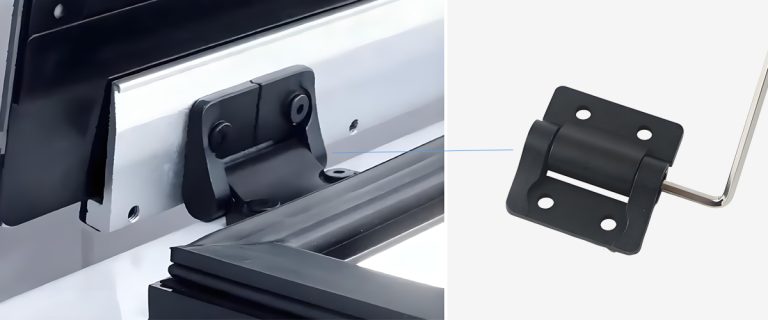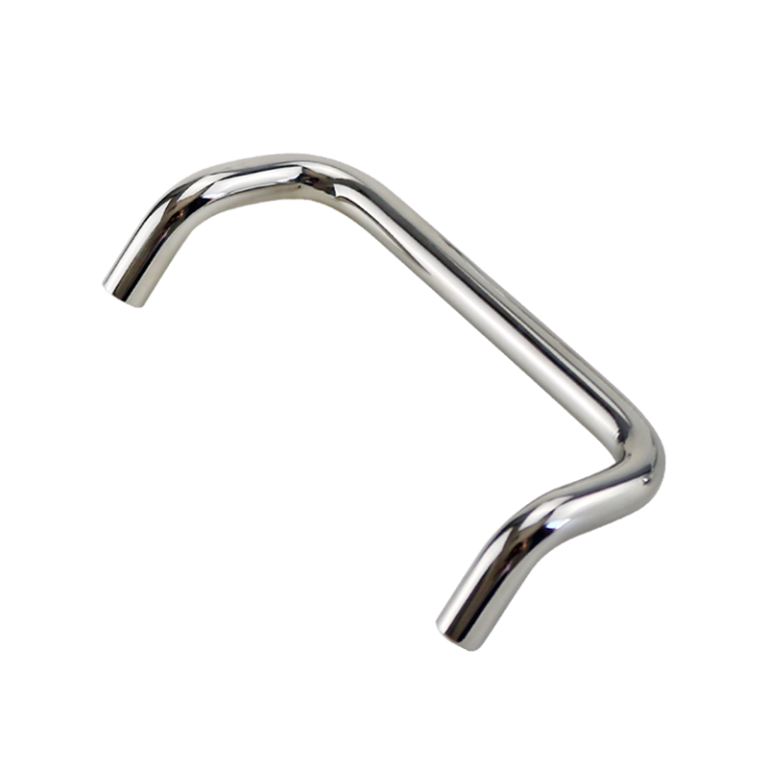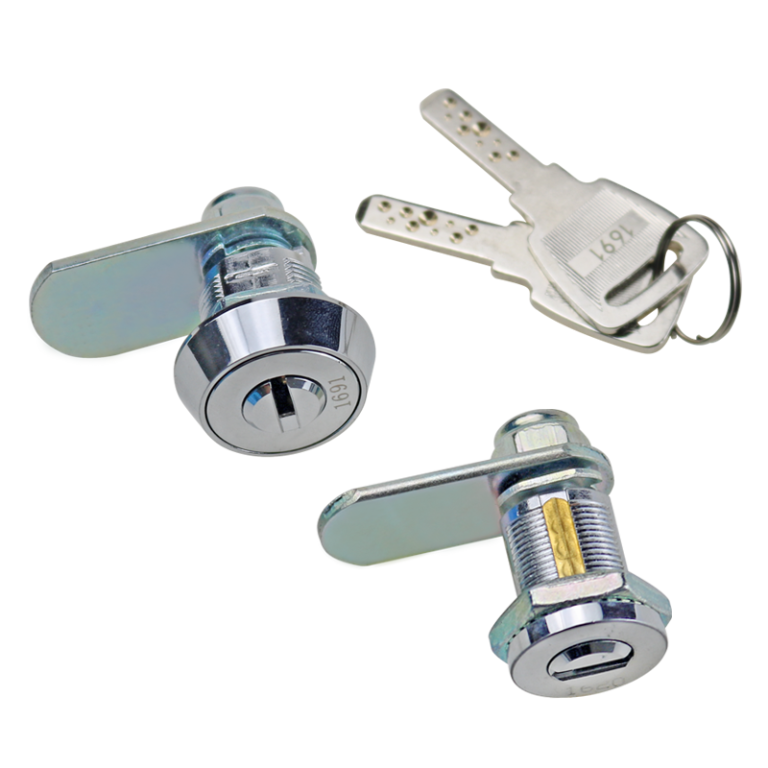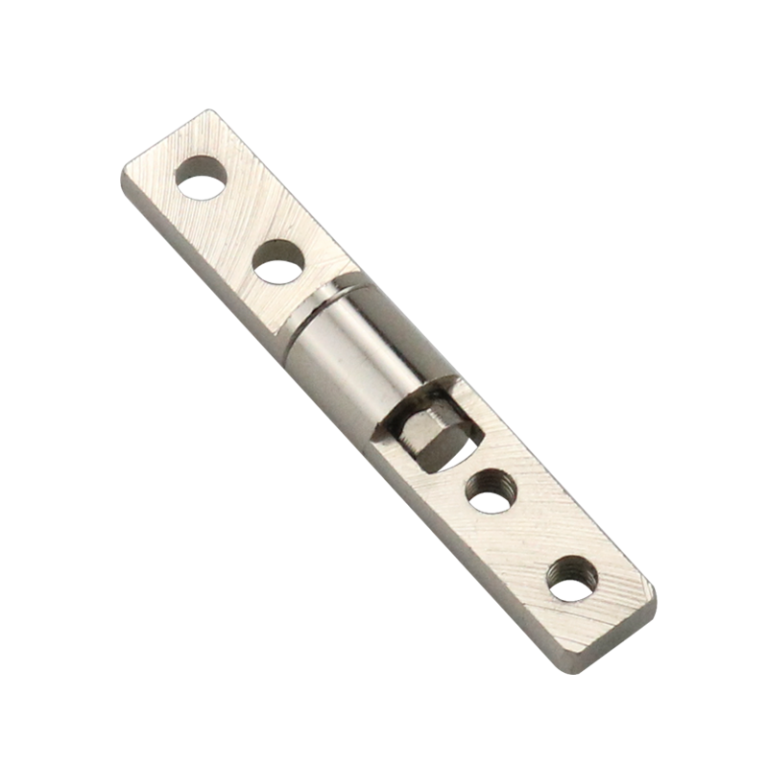HTAN is one of the leading manufacturers of industrial hinges, handles and latches in China.
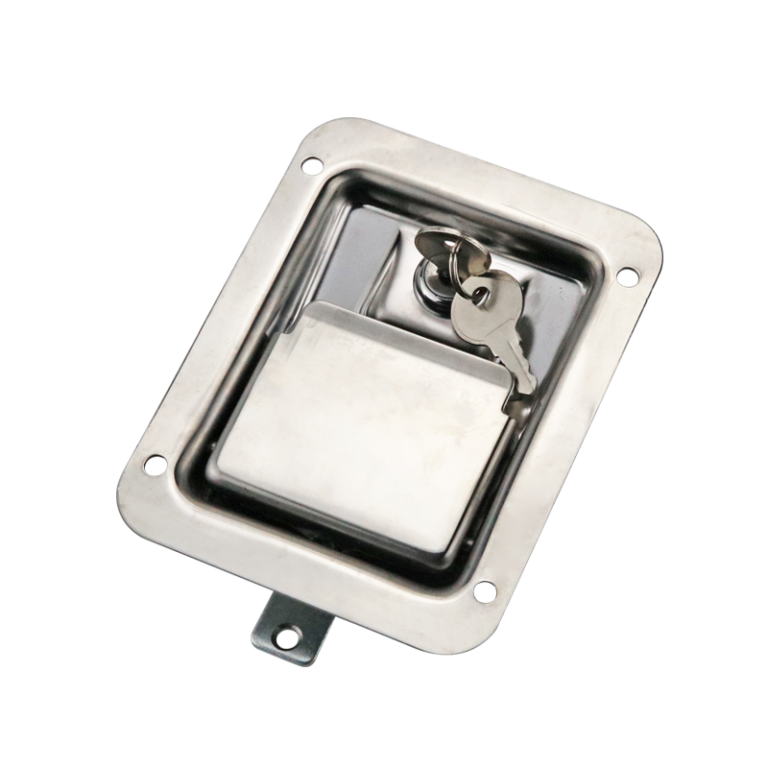
Paddle latches are a type of lock commonly used on industrial enclosures and control cabinet doors. Proper installation ensures a tight seal and extends the service life of the equipment. Improper installation causes loose doors or failure to close properly, leading to vibration, leakage, or safety hazards. The following sections analyze the five most common installation mistakes and provide effective solutions.
Understanding the Structure and Function of Paddle Latches
Although simple in structure, a paddle latch plays a crucial functional role. It usually consists of a mounting panel, operating handle, latch tongue, mounting base, and an internal spring or compression mechanism. Common materials include 304/316 stainless steel, zinc alloy, and engineering plastic. Stainless steel paddle latches offer corrosion resistance and high strength; zinc alloy provides strong mechanical performance at a lower cost; plastic is lightweight but has lower heat and weather resistance.
The paddle latch works through an internal spring or mechanical mechanism that controls the movement of the latch tongue: when the handle is pressed, the latch tongue retracts; when released, the spring pushes the latch tongue forward to lock the door. This type of latch is widely used in electrical cabinets, control panels, refrigeration units, and machine enclosures.
Depending on the installation method, paddle latches can be categorized as surface-mounted or flush-mounted. Surface-mounted latches require no slot cutting and can be fixed directly with screws, while flush-mounted latches require door panel cutouts to ensure the latch body sits flush with the surface.
- Main Components: The panel, handle, latch tongue, and compression spring work together to achieve the locking function.
- Common Materials: 304/316 stainless steel (corrosion-resistant), zinc alloy (high strength), engineering plastic (lightweight but less durable).
- Working Principle: Pressing the handle retracts the latch tongue; releasing it allows the spring to push the latch tongue to lock the door.
- Applications: Commonly used in industrial cabinets, electrical enclosures, control panels, and refrigeration equipment.
- Installation Types: Surface-mounted latches require no slot cutting; flush-mounted latches require precise cutouts for a flush fit with the panel.
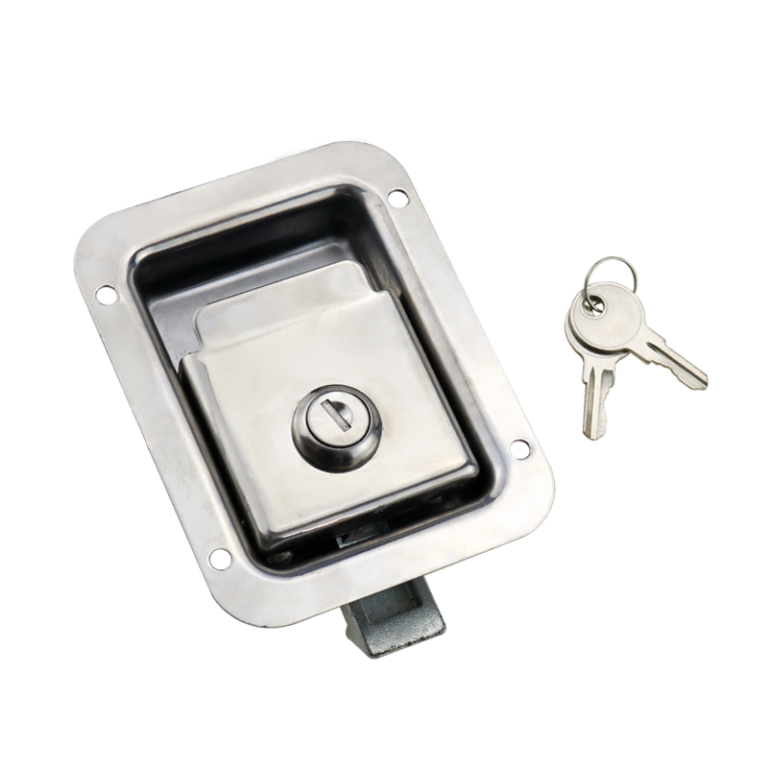
Inaccurate Cutout Dimensions
- Problem Description: Oversized or undersized cutouts prevent the latch from being securely mounted.
- Consequences: The door panel may loosen or fail to close completely, and the latch body may experience stress concentration, accelerating metal fatigue.
- Correct Approach: Follow the manufacturer’s cutout drawings precisely. Use laser cutting or CNC machining to ensure dimensional accuracy. Before installation, verify that the door panel thickness is compatible with the latch’s specified mounting range to ensure a secure and seamless fit.
Misalignment During Installation
- Problem Description: The latch and corresponding striker (or door frame catch) are not properly aligned, preventing the latch tongue from engaging correctly.
- Consequences: The door may not close tightly or lock properly, and vibration during operation may cause loosening or rattling noises.
- Solution: Use a level and alignment tools during installation to ensure the latch axis aligns with the center of the door panel. Perform multiple trial fittings before final tightening. Adjust the mounting bracket or use spacers if necessary to eliminate long-term misalignment issues.
Ignoring Material Compatibility
- Problem Description: Different materials in contact may cause galvanic corrosion or issues due to thermal expansion mismatch.
- Typical Case: A stainless-steel latch installed on an aluminum door panel may experience galvanic corrosion. Using standard plastic latches on high-temperature equipment can cause deformation or aging.
- Solution: Choose materials suitable for the operating environment (e.g., use 316 stainless steel latches in marine or corrosive environments). Add corrosion-resistant washers or insulating coatings between dissimilar materials to prevent galvanic reactions. Consider temperature effects and avoid using low-durability materials in high-heat environments.
| Latch Material | Door Panel Material | Potential Issue | Solution |
|---|---|---|---|
| 304/316 Stainless Steel | Aluminum | Galvanic corrosion | Add stainless steel or insulating washers |
| Engineering Plastic | High-temperature environment | Deformation, aging | Use high-temperature resistant materials |
| Carbon Steel/Zinc Alloy | Corrosive environment | Surface rust | Replace with stainless steel latch |
Improper Tightening Torque
- Problem Description: Overtightening screws can deform the panel or damage the latch body, while undertightening can cause the latch to loosen or fall off.
- Consequences: Handle operation becomes difficult, and the door may rattle during use.
- Correct Approach: Use a torque wrench to tighten screws according to the manufacturer’s recommended torque (e.g., 3–5 N·m). Use lock nuts or spring washers to enhance vibration resistance. After installation, recheck all fastenings and periodically re-calibrate torque.
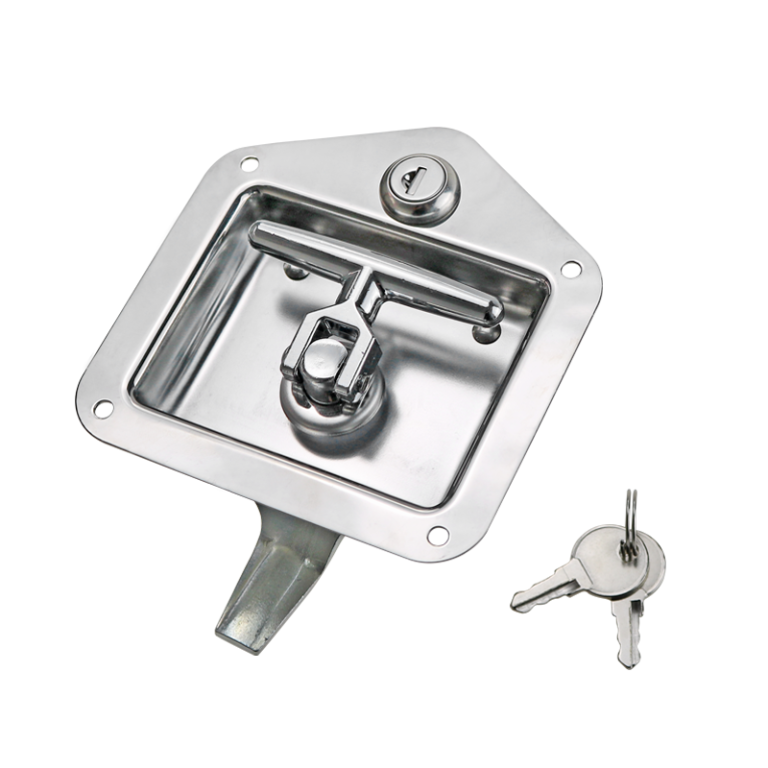
Neglecting Seals and Gaskets
- Problem Description: Failure to properly install seals or waterproof gaskets leads to inadequate sealing.
- Consequences: Moisture and dust can enter the equipment, preventing it from meeting IP65/IP67 protection standards. Long-term exposure may cause corrosion or electronic failure.
- Correct Approach: Ensure the sealing ring is undamaged and fits tightly against the latch body and panel. Apply even pressure when tightening to prevent localized leakage. Choose paddle latches compliant with IEC 60529 IP65 or IP67 standards for reliable dustproof and waterproof performance.
Paddle Latch Installation Best Practices
- Standardized Installation Process: Measure and mark → Cut and drill → Test fit → Tighten → Inspect closure. Each step must be executed carefully.
- Use Installation Templates: Always use the manufacturer’s drilling template or fixture to ensure accurate alignment of holes and latch position.
- Vibration Resistance Measures: In high-vibration environments, use vibration-resistant latches with lock nuts or spring washers, and apply thread-locking adhesive if necessary to improve reliability.
- Regular Maintenance: Periodically lubricate the latch tongue, tighten loose screws, and clean dust or rust. Replace worn parts promptly to maintain optimal latch performance.
- Refer to Industry Standards: Follow standards such as ANSI/BHMA A156 series and EN ISO 9001 for professional guidance to ensure product quality and installation reliability.
Conclusion
The installation quality of a paddle latch directly determines the sealing and safety performance of industrial equipment doors. A precise installation process and careful adjustments significantly enhance equipment reliability and lifespan. Technicians should follow standardized procedures — from accurate measurement to fine alignment — without skipping any steps. Only by ensuring precise installation can you achieve greater operational efficiency, lower maintenance costs, and longer service life.


